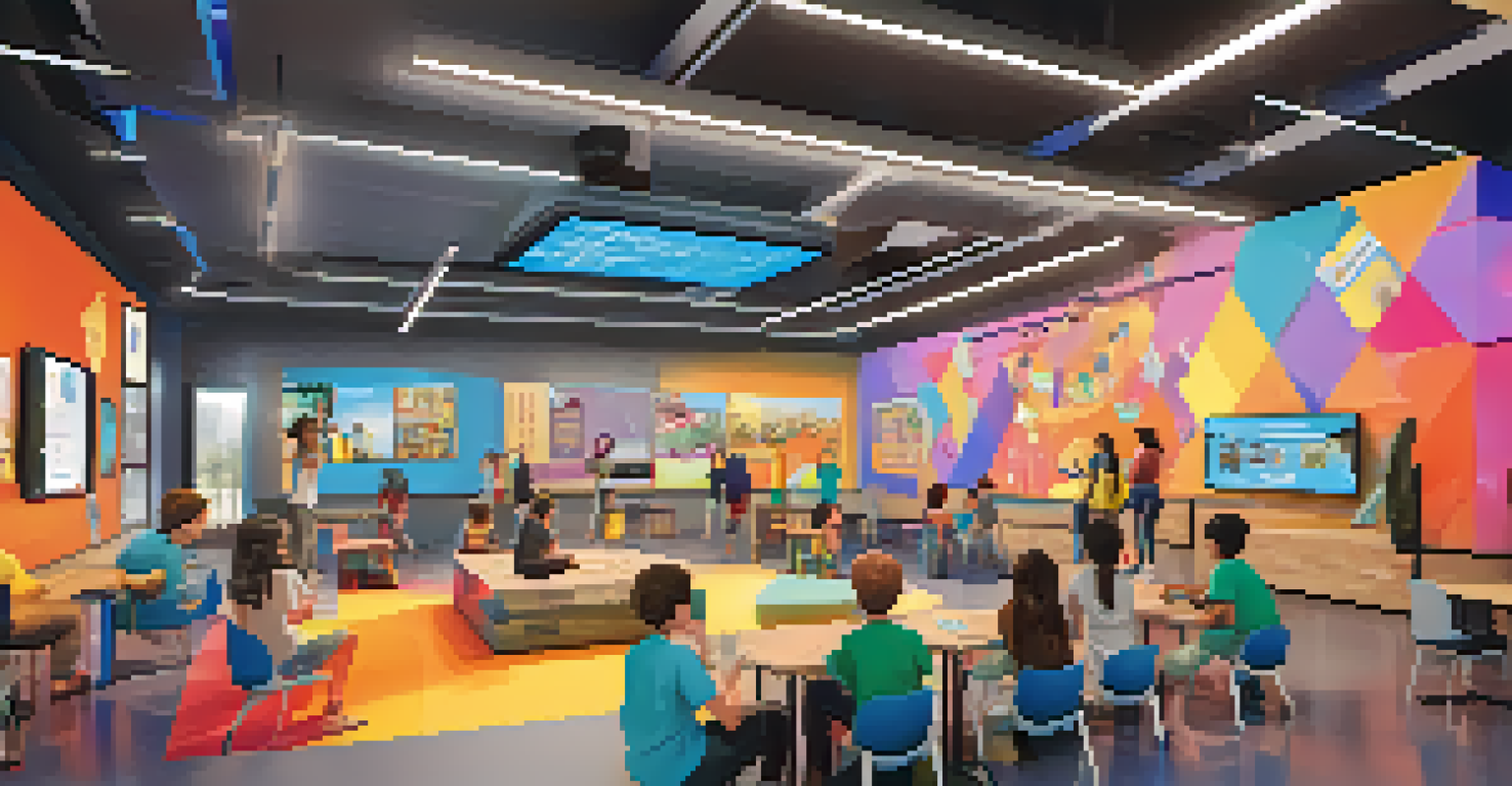Engaging Learners Through Interactive Online Learning Spaces

Understanding the Importance of Engagement in Learning
Engagement is crucial in online learning environments, as it directly influences a learner's motivation and retention of information. When learners feel involved, they are more likely to participate actively and invest in their own education. This is particularly important in digital spaces, where distractions are abundant and attention can easily wane.
Engagement is the key to unlocking the full potential of online learning environments.
Interactive elements, such as quizzes and discussion forums, create a dynamic learning atmosphere that encourages participation. By fostering a sense of community, learners can share insights and collaborate, which enhances their overall experience. The more engaged the learners are, the more likely they are to achieve their educational goals.
Ultimately, understanding the importance of engagement shapes how educators design their online courses. By prioritizing engagement, they can create more effective and enjoyable learning experiences that resonate with their audience.
Creating Interactive Online Learning Environments
To cultivate an engaging online learning space, it’s essential to incorporate interactive tools and techniques. This can include multimedia presentations, interactive simulations, and real-time polls that keep learners actively involved. By mixing different formats, educators can cater to various learning styles and preferences.

One effective method is utilizing gamification, where educational content is presented in a game-like format. This approach not only makes learning fun but also motivates learners to complete tasks and achieve goals. By turning lessons into challenges, learners are more likely to stay engaged and retain information.
Engagement Boosts Learning Success
Active engagement in online learning environments directly enhances motivation and retention of information.
Moreover, incorporating social learning elements, such as peer reviews and collaborative projects, encourages learners to connect with each other. This sense of belonging can significantly enhance their motivation and commitment to the learning process.
Leveraging Technology for Enhanced Interaction
Technology plays a vital role in creating interactive online learning spaces. Tools like video conferencing and chat functions allow instructors and learners to communicate in real-time, simulating a traditional classroom environment. This immediacy helps to build relationships and keeps learners engaged.
Feedback is the breakfast of champions.
Moreover, learning management systems (LMS) often come equipped with features that facilitate interaction, such as forums and message boards. These platforms allow learners to ask questions, share resources, and discuss topics outside of structured class times. The more accessible communication is, the more likely learners are to participate.
By leveraging technology effectively, educators can create a rich, interactive experience that keeps learners engaged and motivated. This adaptability to technology ensures that learning is not only informative but also enjoyable.
The Role of Feedback in Online Learning Engagement
Feedback is a crucial element in online learning that fosters engagement and improvement. Regular, constructive feedback helps learners understand their progress and areas for growth. This interaction can significantly enhance their motivation and investment in the learning process.
Incorporating various forms of feedback, such as peer reviews, automated quizzes, and instructor comments, ensures that learners receive diverse insights. This multiplicity allows them to see their work from different perspectives, encouraging deeper reflection and learning. Positive reinforcement can further boost their confidence and commitment.
Interactive Tools Enhance Learning
Incorporating interactive elements like quizzes and gamification fosters a dynamic atmosphere that keeps learners involved.
Importantly, timely feedback is key to maintaining engagement. When learners receive prompt responses, they are more likely to stay connected and motivated to continue their learning journey.
Designing Content for Engagement and Interaction
Content design is fundamental in creating engaging online learning experiences. It's essential to present information in a variety of ways, such as videos, infographics, and interactive exercises. This not only captures learners' attention but also caters to different learning preferences.
Moreover, incorporating storytelling elements can make the learning material more relatable and memorable. By presenting content through narratives, learners can connect emotionally, which enhances their overall experience. This connection can lead to higher engagement levels.
Additionally, chunking content into smaller, manageable sections allows learners to digest information more easily. This strategy helps to maintain their focus and encourages them to progress through the material without feeling overwhelmed.
Encouraging Collaboration in Online Learning Spaces
Collaboration is a powerful tool for engagement in online learning. By encouraging group projects and discussions, learners can share ideas, challenge each other, and gain new perspectives. This social interaction can enhance the learning experience and foster a sense of community.
Using collaborative tools, such as shared documents and breakout rooms, allows learners to work together effectively, even in a virtual setting. These tools enable real-time collaboration, making the learning process dynamic and interactive. The ability to contribute to group discussions also boosts individual confidence.
Feedback Fuels Student Motivation
Regular and timely feedback helps learners understand their progress and encourages deeper reflection on their work.
Creating opportunities for peer-to-peer interaction not only enhances engagement but also mirrors real-world working environments. This preparation for collaborative workplaces makes the learning experience more relevant and impactful.
Measuring Engagement in Online Learning
Measuring engagement in online learning is crucial to understanding its effectiveness. Educators can use analytics from learning management systems to track participation rates, discussion contributions, and completion rates. This data provides valuable insights into how engaged learners are with the content.
Surveys and feedback forms can also be useful tools for gauging learner satisfaction and engagement levels. By asking targeted questions, educators can identify areas for improvement and adjust their strategies accordingly. This responsiveness shows learners that their input is valued, further enhancing their engagement.

Ultimately, regular assessment of engagement metrics allows educators to refine their approaches and create more effective online learning environments. This ongoing evaluation ensures that the learning experience remains relevant and impactful.